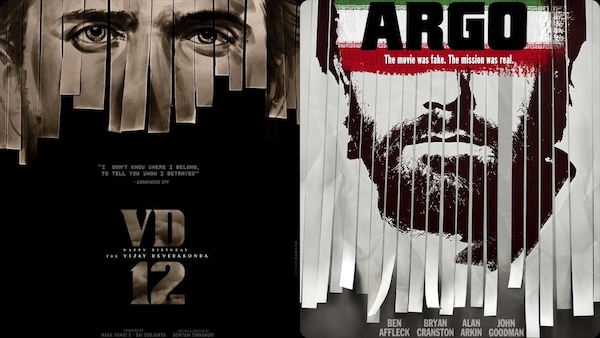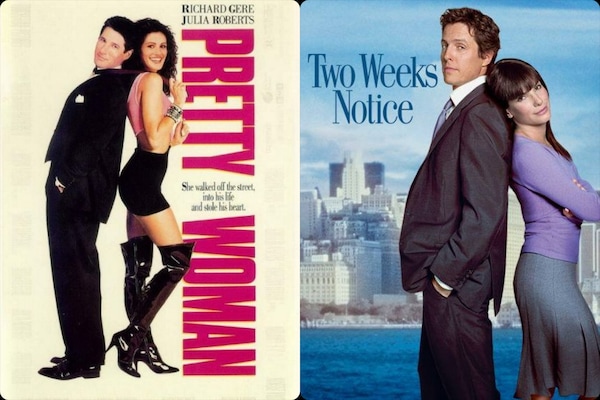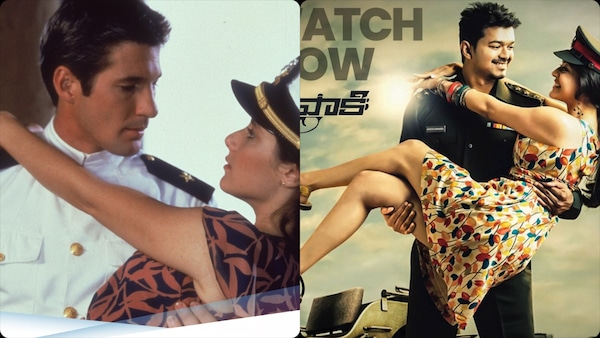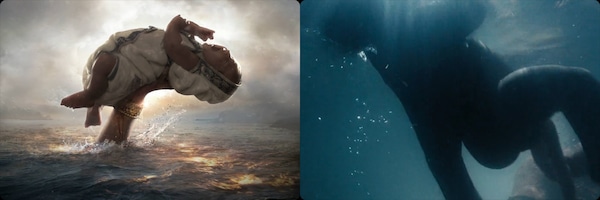VD 12 poster plagiarism: A brief look at the thin line separating homage & imitation in Indian cinema
The 'shredded face' trope employed in the poster of Gowtam Tinnanuri's next with Vijay Devarakonda prompts an interesting look into the world of designing.

Last Updated: 03.20 PM, May 10, 2023
The first-look poster of Vijay Devarakonda's VD 12 (tentative) has stimulated an interesting conversation. The Gowtam Tinnanuri directorial believably features the 34-year-old actor in the role of a spy/secret agent and the poster in question sheds light on the intriguing element of betrayal, which one could assume to be the central theme of this film. The quote 'I don't know where I belong, to tell you whom I betrayed' (credited to an anonymous spy), too, almost confirms that the film's protagonist's loyalty is under scrutiny but what's drawn the attention of social media is the catchy 'shredding' design that the makers have employed.
Vijay Devarakonda's cropped face is run through a shredder, it would seem, and the remnant bits are put together to imply that he has been stripped of his identity. While the unique motif attracted a lot of praise from fans and film aficionados, a few curious minds would dig a little deeper to spot that the design of the VD 12 poster is eerily similar to that of the Hollywood film Argo. The 2012 film directed by and starring Ben Affleck is based on a real-life story of a CIA exfiltration specialist (Affleck) who finds himself in the belly of the Iranian Revolution and must shed his identity as an agent to extract fellow Americans from the middle-eastern country. Here, too, the poster includes a shredded image of the protagonist's face to underline the concepts of identity and disguising, especially in the case of intelligencers or spies.
Ever since the stark resemblance between the two posters (VD 12 and Argo) came to light, the word plagiarism, too, has cropped up with a few social media users now wondering whether the enterprising thought behind the Telugu film poster is actually a borrowed one. The thin line separating inspiration & thievery has been abused countless times in the past and while there is a potential influence that director Gowtam Tinnanuri & Co. have drawn from films of the ilk of Argo, it wouldn't be an easy task to categorize their work as plagiarism. And even if one does pull them up for that, the creative team could always get away by claiming that they were only paying a tribute to an age-old trope of poster designs.
Naga Vamsi, one of the two producers of VD 12, has offered a similar clarification in his latest tweet and has cited a few more examples to prove his case. Satyajit Ray's 1991 film Agantuk utilizes the shredded face trope, he says, and so does the poster of Lokesh Kanagaraj's Kaithi, in which Karthi's face is split into tiny bits through lines of dripping blood. Tony Gilroy's 2012 spy film The Bourne Legacy, too, has the stock design in place (albeit with a horizontal pattern) and if you were to look up the 2016 spy drama series Berlin Station, you will be surprised to know just how common the motif is.
But would team VD 12 be the first one to be found guilty of this? Certainly not. Hollywood has been notorious over the years to rehash a popular design to the extent that it's ubiquitous and unimaginative now. The Pretty Woman poster, which includes leads Richard Gere & Julia Roberts posing with their backs together (and Gere leaning towards Roberts just so slightly) triggered a whole factory spin of the back-to-back, look-into-the-camera pose for Hollywood rom-com posters with films like Two Weeks Notice, Intolerable Cruelty and so many more sticking to that template.

Several popular Indian filmmakers, too, are guilty of treading (and possibly trespassing) the line that divides imitation and homage. The iconic hoarding image of Aditya Chopra's Dilwale Dulhania Le Jayenge has Shah Rukh Khan (holding a mandolin) leaning his back against Kajol's (who clutches a book and wears a disappointed look on her face). The two are polar opposites in the film who then turn lovers because they begin to acknowledge and respect the contrasts; in another famous DDLJ poster, we see Raj flamboyantly carrying Simran on his shoulders to tell us that they have finally united. C. Premkumar's '96, too, refers to this old template in one of its posters and so does Kunal Kohli's Hum Tum, wherein, the warring protagonists are shown falling for one another over the course of the narrative that spans nearly a decade.

Similarly, one of the posters of A.R. Murugadoss's Thuppaki, in which Vijay carries co-star Kajal Aggarwal in his arms, seems like a clear knock-off of the An Officer and a Gentleman poster. Zoya Akhtar's Zindagi Na Milegi Dobaraa was accused of borrowing the template of Lords of Dogtown and the poster of S.S. Rajamouli's Baahubali: The Beginning, the one where a baby is held aloft by an arm almost submerged in water, finds its roots in the breathtaking climax of Mel Gibson's Apocalypto (it is no secret how much Rajamouli adores both Gibson and the film).`


The occurrences of plagiarism/inspiration are endless but one finds a clear demarcation between reinterpreting a resonating idea and recreating an existing template. The differences are often subtle and justifiable but the resemblances, when executed in an uninspiring manner, are undeniable. A poster, after all, is a great tool of lure and in most cases, it has the capacity to capture the entire essence of the film.
